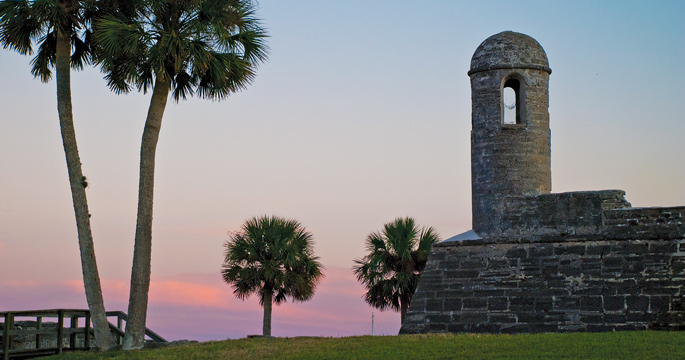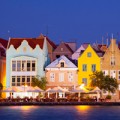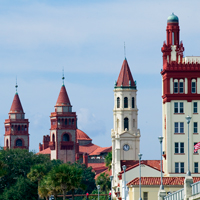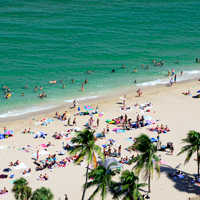Easy to explore on foot, Florida’s oldest city has a treasure to behold around every corner
Bring comfortable walking shoes when you visit St. Augustine, the historic town tucked in Northeast Florida on the edge of Matanzas Bay. Red brick-lined streets, the pedestrian-friendly St. George Street and squares shaded by sprawling oak trees make it easy to navigate on foot. You can trace the old city’s history of years under Spanish, British and American rule dating back to the 16th century.
Start at the Castillo de San Marcos, a fort built by the Spanish to defend the colony from the British. Besides the protection of a moat, the fort was built using blocks of coquina, a soft rock of seashells and coral from a local quarry. No invaders could crack the walls, as cannonballs fired from approaching ships dented rather than shattered the walls. Wander the casements and keep an eye out for the re-enactors in period clothing demonstrating the use of historical weapons. Next cross the street and pass through the City Gates onto St. George Street. On your right is the Oldest Wooden Schoolhouse, a one-room building of red cedar and cypress where students gathered for classes in the 1700s. A huge chain used to anchor it against hurricane-strength winds remains intact. Further down on the left is the Colonial Quarter, a garrison town depicting life under the Spanish from the 16th to 18th centuries and under the British when they took over in 1763. Venture into a soldier’s home, watch a blacksmith fire up wrought iron and climb the watchtower.
Walking St. George Street you’ll pass cafes, boutiques, candy shops and the statue of Queen Isabelle on her ass in the garden at Hypolita Street, which always gets a chuckle from passers-by. At the end sits the Plaza de la Constitución, which by government decree had to be a rectangle with a government building, church and public market. Except for the church, which was replaced with the Cathedral Basilica of St. Augustine in 1887, the other buildings constructed by the Spanish still stand.






